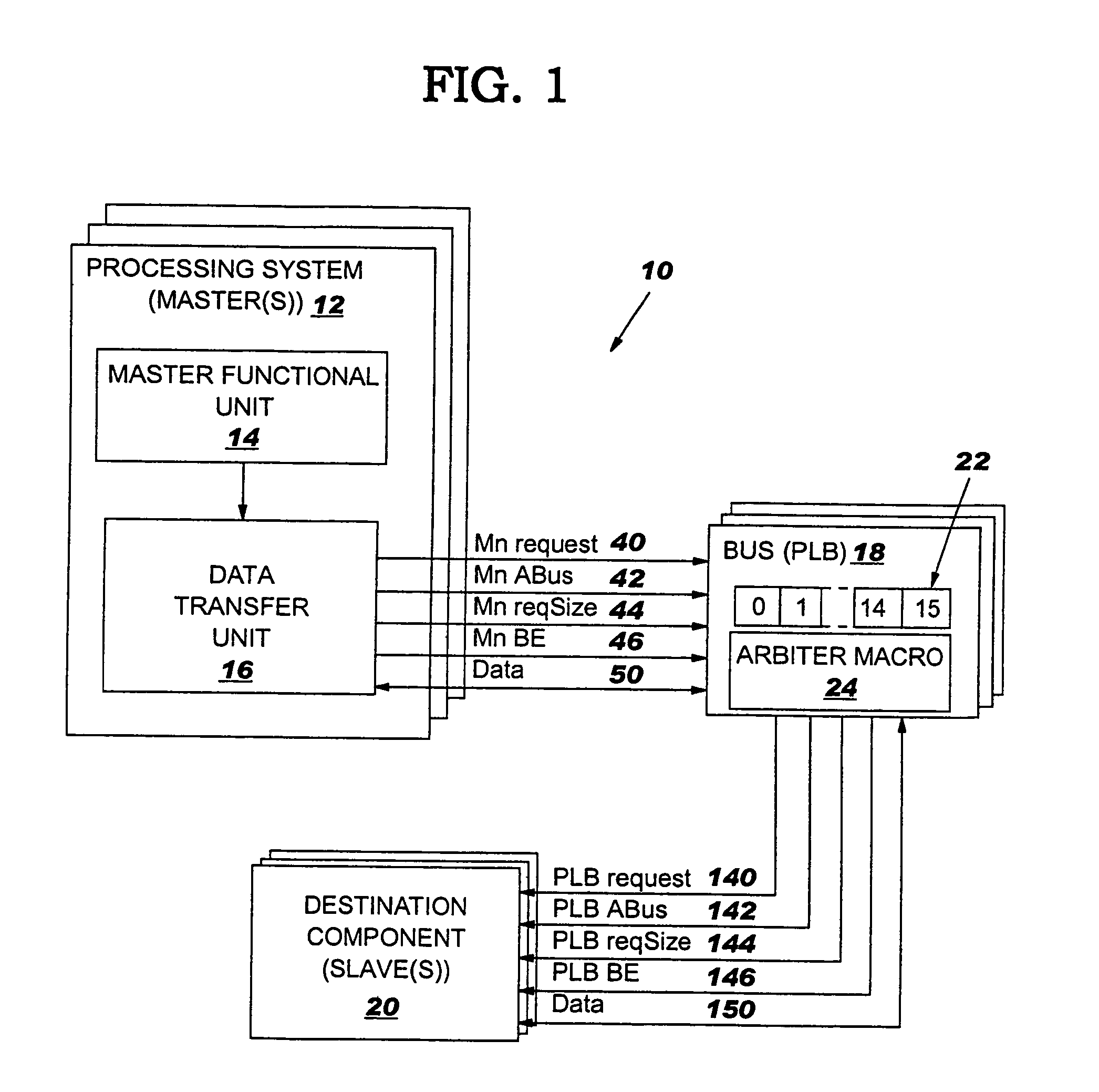Single request data transfer regardless of size and alignment
a data transfer and single request technology, applied in the field of data transfers, can solve the problems of unaligned first and final data beats, reducing bus throughput and overall system performance, and unaligned data transfers presenting additional problems, so as to reduce the amount of switching, bus arbitration and power consumption required, and reduce power consumption. the effect of the number of data transfer requests
- Summary
- Abstract
- Description
- Claims
- Application Information
AI Technical Summary
Benefits of technology
Problems solved by technology
Method used
Image
Examples
Embodiment Construction
[0020]The invention disclosed herein is a method, computer system and set of signals, for completing a data transfer between master and slave across a bus using a single data transfer request regardless of whether the data transfer is aligned or unaligned, or requires a single data beat, i.e., cycle, or multiple data beats. The data transfer may be unaligned at a starting address and / or an ending address. However, each data transfer must be for contiguous data. That is, all bytes between the starting address and the ending address must be transferred.
[0021]For purpose of clarity only, the description includes the following headings: I. Computer System Overview, II. Method, III. Transfer Qualifier Signals, IV. Illustrative Operation, V. Conclusion.
I. Computer System Overview
[0022]With reference to the accompanying drawings, FIG. 1 is a block diagram of a computer system 10 of the invention. Computer system 10 includes a processing system 12 (hereinafter “master”12), a processor local...
PUM
 Login to View More
Login to View More Abstract
Description
Claims
Application Information
 Login to View More
Login to View More - R&D
- Intellectual Property
- Life Sciences
- Materials
- Tech Scout
- Unparalleled Data Quality
- Higher Quality Content
- 60% Fewer Hallucinations
Browse by: Latest US Patents, China's latest patents, Technical Efficacy Thesaurus, Application Domain, Technology Topic, Popular Technical Reports.
© 2025 PatSnap. All rights reserved.Legal|Privacy policy|Modern Slavery Act Transparency Statement|Sitemap|About US| Contact US: help@patsnap.com



